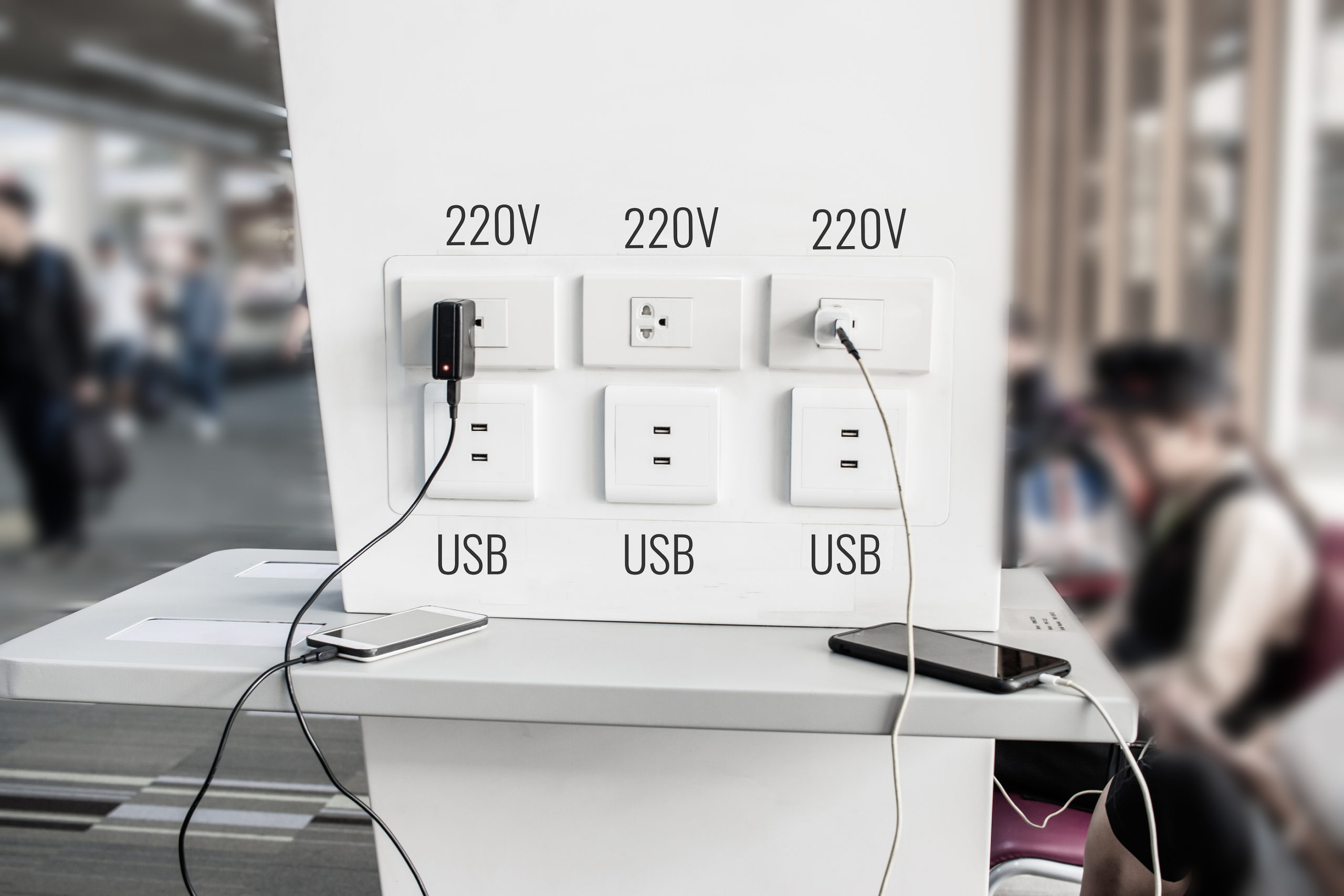Public USB Charging Stations: Are They Safe? What to Look Out For

Our smartphones have become almost an extension of ourselves that we can’t do without. 53% of Americans say that they have never gone longer than 24 hours without their phone, and 74% say they feel uneasy about leaving their phone home when they go out.
Most people will take their mobile phone with them wherever they go, and this can lead to the cause for another statistic. 48% of people say they feel a sense of panic or anxiety when their phone’s battery gets below 20%.
When you’re away from home all day or traveling, your phone battery will inevitably begin to drain and run low. If you’ve ever looked at a busy airport gate, you’ll see that the seats taken first are the ones near a power outlet or USB charging port.
We’re also using our phones all the time for checking email, using mobile VoIP, checking social media, watching videos, and more. Each of these activities will drain your battery just a little more.
There is usually a sense of relief when your battery is low, and you run across a free public USB charging station. Like many others, you may plug your phone in without giving it a second thought, just thankful to charge back up.
But those public charging stations could be taking something from you while giving you that all-important battery charge.
How Hackers Use Malware on Public Charging Stations
There are warnings from the Federal Trade Commission and others about the dangers of public charging stations that use USB ports. Hackers have been using these to steal data from devices, plant malware, and more.
What happens is that criminals load malware onto a public USB charging station, such as one at an airport, restaurant, or in another public area. When an unsuspecting person connects their device to that USB charging port, the malware is released, and the hacker can do any number of things.
There is a term used for this, which is Juice Jacking. The user needs “juice” in the form of a battery charge, and the hacker takes advantage of that by hijacking an important device data port, the USB port.
USB ports can be used for charging phones and tablets; however, they were initially designed as a data port. For example, you can plug a flash drive into a USB port and then read the files on that drive.
Some of the things a hacker can do when you plug your phone into one of these “juice jacking” USB ports are:
- Read all the data on your device
- Lock your device
- Infect your device with malware
- Steal sensitive information on your phone
- Plant a type of malware that will allow the SIM card on your phone to be cloned
You may charge up your phone and be on your way, never realizing that you just had all your phone’s data stolen.
How to Avoid Falling Victim to Juice Jacking
Because hackers infect the ports of legitimate public USB charging stations, it can be difficult for you to know which are safe and which are not.
Most people won’t just let their phone go dead if they can help it, so they may think taking the risk is worth it to get a charge when they don’t have another easy way to get one.
There are some things you can do to avoid being subject to an infected USB port.
Use Electrical Outlets to Charge Instead of USB
An electrical outlet isn’t going to transfer data as a USB connection will. Make sure to bring the part of your charging cable that includes an electrical plug, and if traveling overseas, get a power adapter so you can use the different types of electrical outlets.
Many charging stations in airports and other public areas will include both a USB port and an electrical outlet for charging.
Carry Portable Power Banks
You can purchase portable power banks for around $25-$30. These allow you to charge your phone without needing to use an external source. This is very helpful to have with you when traveling, especially if you’re not going to be in a place where you can easily charge your phone or tablet.
Carrying your own small power source that is good for one or two full battery charges can help you avoid that low-battery anxiety as well as avoid potentially infected USB charging ports.
Get a Charge-Only Cord
There are charging cords that you can buy for USB charging that are “charge only.” This means that it will only allow through the power for charging but will not enable a data connection like other USB cords will.
Carrying this with you provides you with a backup in case you find yourself needing to charge and a USB port is the only option. It will allow you to do it more securely.
Ensure Your Team’s Mobile Devices are Properly Secured
How secure are the mobile devices your team uses for work? C Solutions can help your Orlando area business with a mobile security assessment and solutions to reduce risk.
Schedule a free consultation today! Call 407-536-8381 or reach us online.
